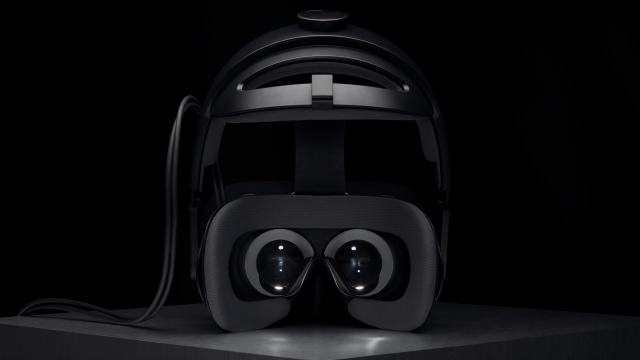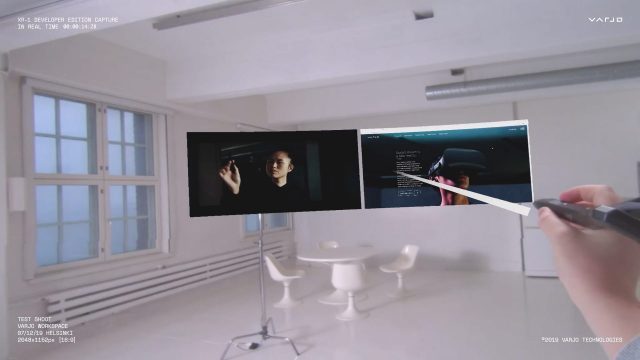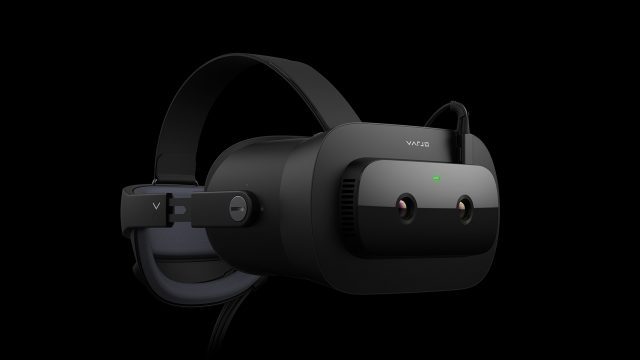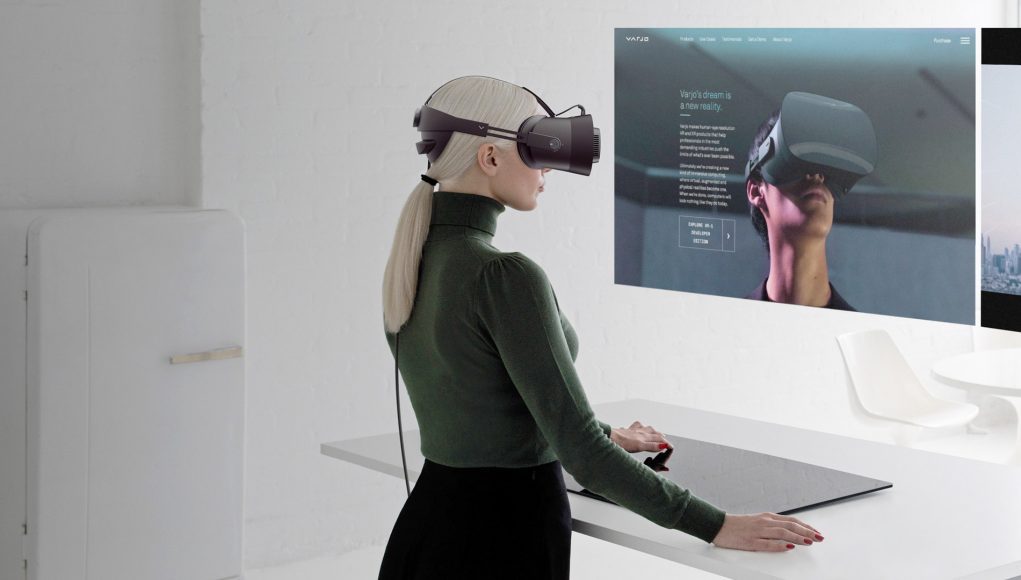Beyond the unique selling point of Varjo’s headsets—a novel display concept which offers ‘retina resolution’—the company is pioneering the way in which VR headsets could be a part of the day-to-day enterprise workflow.
This week at CES 2020 I got to see Varjo’s latest demo which combined the AR-capable XR-1 headset with the company’s ‘workspace’ concept which envisions replacing real monitors with virtual ones to streamline 3D and CAD workflows.
Retina Resolution in a VR Headset

Like Varjo’s other headsets, the XR-1 has what the company calls the ‘Bionic Display’; when you look through the headset you see a reasonably wide field of view but the center of the view has extremely high resolution. This is done with a novel combination of a small high density display in the center with a larger lower resolution display for the peripheral view. The result is genuinely impressive, and Varjo has reached a point where the boundary between the low and high resolution parts of the image is nearly invisible.
With this approach, Varjo is the only company selling a complete headset which can offer genuine 60 PPD ‘retina resolution’—detail which matches the limit of the human eye—at least in a portion of the field of view.
The above through-the-lens photos, captured by Varjo, are an accurate portrayal of the difference in visual fidelity between Vive Pro and Varjo, but only for the center of the field of view (which is what’s shown here).
And while there’s plenty of value to be had from headsets which don’t reach that level of detail, it’s an absolute necessity if you want to fully replace real monitors with virtual ones.
To that end, Varjo is going beyond just building headsets. The company revealed its ‘workspace’ concept, a vision of office productivity where 3D and CAD workers can easily be co-present with 3D content and with the traditional 2D tools they use to create it.
Varjo’s Vision of an XR Workplace

At CES 2020 this week I got to see Varjo’s workspace concept in action. And while there needs to be major improvements to UX and form-factor before workers will be wearing headsets at their desks all day, the vision that Varjo showed is quite compelling.

In addition to the Bionic Display, Varjo’s XR-1 offers the best pass-through AR capability I’ve seen yet. This is thanks to high resolution, high-framerate, wide FOV, color cameras, and Varjo’s careful calibration of all the pieces in the passthrough puzzle.
In the demo, I saw the real room around me through the headset’s pass-through AR view, along with a virtual floating window that mirrored the Window 10 desktop of the PC that the headset was connected to. Thanks to the XR-1’s retina resolution, I could read even the smallest text on the screen just as well as if it was a real display in front of me. On most other headsets I’d need to blow up the window to be 10 feet wide in order to have the same level of text clarity.
But it isn’t just about having unlimited virtual monitor real estate. Varjo showed how it can bring 3D content out of the monitor and into the world around you. To show this function, the company pulled up a desktop window showing a 2D view of a 3D model, and with the click of a button, a fully 3D model suddenly popped into the room next to me at full scale. That meant I could stand up and walk around the model to see it in as if it was a real object before me.
For enterprises which deal in high-end 3D design (think architecture, automotive, engineering, etc), Varjo thinks there’s value in giving workers a way to seamlessly move between their 2D tools and the immersive power of VR in this way.
For example, in the demo the company showed how someone designing the spatial layout of an aircraft cockpit could make some changes and then, with the press of a button, find themselves sitting in the full-scale cockpit to check how their changes feel right. Too far to reach the throttle? Jump back to the CAD application make some tweaks and then check again in VR with just a click. This sort of fast iteration can save tons of time for this kind of design work.
Varjo even showed how they could turn on hand-tracking so that my real hands could be projected into the cockpit with me. While the hand detection and projection in the demo is still really coarse around the edges, the feeling of reaching out to the various cockpit controls with my real hands (and seeing them properly occlude behind the virtual model) was magical enough to make me frustrated when I couldn’t actually feel the model when I tried to touch it!
Beyond augmenting traditional 3D design workflows with the power of VR, there’s other obvious benefits to this ‘work inside of VR’ concept—like being able to instantly ‘teleport’ into the office of another VR worker across the building (or across the world) for a quick discussion about the changes to the model.
– – — – –
After a demo like the one Varjo showed at CES this week, it’s easy to let the imagination run with the possibilities, but there’s still mountains of friction to sort out in the short term. Everything from headset ergonomics, spatially interconnected software and services, social norms of headsets-in-the-workplace, and plenty more will need to be forged and honed before it’s all smooth enough to present true value to an enterprise. That said, some form of Varjo’s compelling vision is almost surely the long-term future of XR in the workplace.







